It was sometime in 1990 that I stumbled across Graham Metlerkamp’s little farm in Chimanimani, and I was slowly but inexorably drawn into the world of permaculture. In learning about natural regeneration, naturalistic farming and everything that went with it I was introduced into the world of possibilities, my horizons expanded and suddenly I felt very differently about life in general. I was 27 at the time and meeting a bunch of guys who were entering their 40’s, so it had a real feel of growing up, or moving on from being merely a spectator on life to taking part. From being a backpacker passing through, I was suddenly in charge of a farm, with cows to milk and faithful hound close by my heels.
I was learning, but also something else that felt important was happening, that the previous stepping stones of life that had brought me this far were starting to align and feel like there was a path that I had followed, where previously everything had felt like a series of random and unconnected events. I had worked on farms as a teenager, enjoyed manual and physical work, but then had also studied development and been to university. I had travelled and explored and always enjoyed practical jobs, tree work, groundwork, building work, but had a brain and tended to get bored and dissatisfied if not challenged enough. This had led me to train as a teacher, economics was the subject area I was pushed into and although I liked working in schools it was not enough to fill my imagination and fulfill the drive I had inside me to work for change.
After university I had ended up in a development education project, driving a campaign bus and devising educational programs that reflected the struggle against injustice and inequality and increasingly the disastrous impact human development activities were having on the environment. It seemed to me that there was a foundational lack of imagination underpinning the collective failure of our culture to grasp the fundamentals of sustainability. Instead of embracing this as an evolution of human behaviour, many see it is a threat, or a lie, some kind of global deceit to undermine the status quo.
Permaculture joined all the dots for me, the practical, the political, the lifestyle, the values, the connection to nature, educational work with the focus on people and consensus, opportunities to travel and explore, it just made sense and fitted together. I feel that it was in Zimbabwe, on that little farm that I started to become the person that I am, finding my way forward when before I had just felt angry at the world, wanting to tare it down.
When I came to Eastern Zimbabwe I could see with my own eyes, whole mountain sides collapsing due to deforestation and inappropriate farming practices. The need to change was obvious and self-driving and these changed practices, informed by permaculture design were leading to the restoration of the landscape. We were seeing examples all around that showed how landscape and community could respond positively with the right kind of inputs, design and cohesion.
This video gives a taste of the Chikukwa permaculture project in Chimanimani district. A place we visited in 1991 and by 2016 when I think this was made, the place had been transformed, by the community to create a beacon of positive development that the whole nation might learn from.
The Western world’s problems run so much deeper, and because we are not directly seeing the consequences of our actions in such a clear and obvious way, the responses are not clear at all. We live in an abstract world of consumerism and market economics, we are not really producers anymore and not tied to the land and the seasons in such a clear and obvious way that the good folk in Africa are. We literally cannot see the wood for the trees. I can’t help but think the we Westerners see the environment and energy crisis as a technological issue, or an economic one, rather than seeing the need to address the underlying biology and physics that underpins the problem.
Snapshots of permaculture education in East Africa


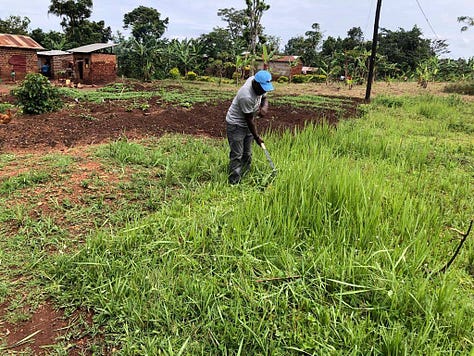
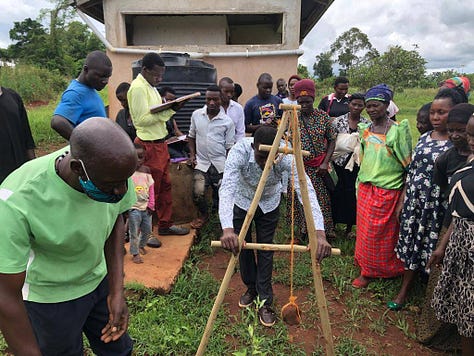


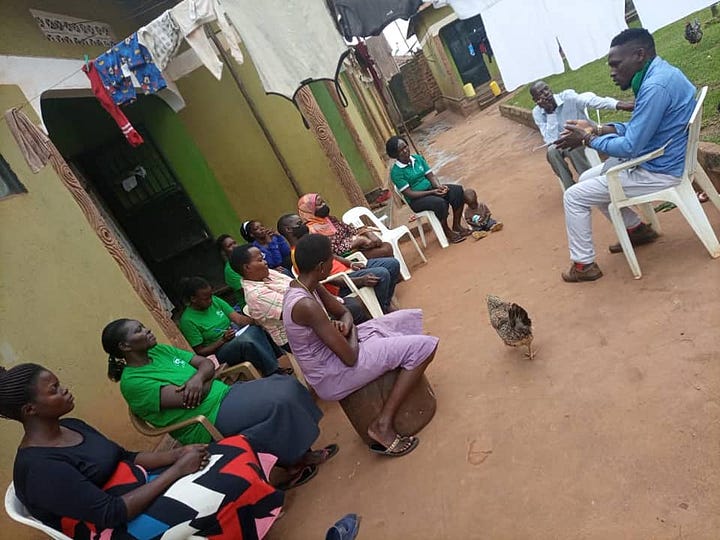
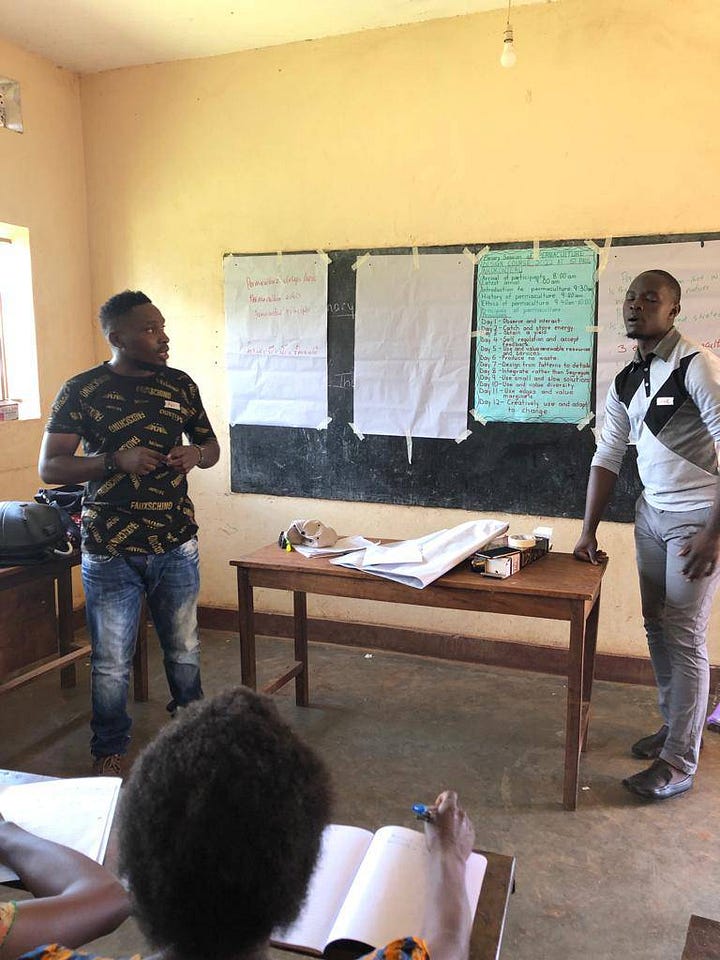
I have been convinced by personal experience of just how powerful this kind of training and approach can be, especially in the African context, the immediacy of the challenge, that significant improvements are possible without having to invent and implement a whole new economic paradigm. Here in the West, we are still struggling to appropriate other nations’ resources to continue this rapacious path of development by any means, to sustain our mad over consumption as an economic goal.
Sector39 and beyond
In 2002, fresh out of my role at Centre for Alternative Technology I was recuited as a project manager at RISC in Reading to oversee the establishment of a permaculture inspired roof garden. The funded project took permaculture design application to the next level and as a follow on, once funding was completed we created Sector39. This was in 2005 and the partnership had the aim to bring permaculture ideas and practice into the mainstream. The idea was always to find practical ways to bring these ideas and perspectives forward, into new circles and to find new applications relevant in new contexts. We wanted to be influential and also not to be typecast, to be able to move into new sectors constantly, not to be given a one-dimensional label like ‘green’, not to be pigeonholed but to lead into a new way of seeing the world around us.
We started in schools, building forest gardens for schools, educate the next generation is always the way I guess, but also school is a tightly regulated environment, with its own in-built goals and operating procedures that are difficult to buck and change. Yes, we could create lovely school forest gardens and living structures, but was this going to penetrate the heart of the school operations? I guess not. It was good experience and together with a colleague from RISC in Reading, Dave Richards Sector39 Mark1 was born. We built a series of school gardens inspired by and in part populated by plants form the Risc roof garden at 39, London Street, Reading. I am really proud of the work we did at the time but it started to draw me too far from home, something I was not ready for.
Chickenshack days
The reality of the situation was that I was living in North Wales and developing contacts and a network in SE England, something had to give. My home in Wales was Chickenshack housing co-operative, a renovated farmhouse and set of buildings with 4 acres of garden that had been our permaculture ground zero. I was not ready to leave there yet and by 2006 I was planning the first full PDC at Chickenshack hosted and run by us, with a lead tutor team of Mike Feingold and Sarah Pugh. (A Permaculture Design Certificate course is a 12-day immersion into permaculture pracice, ideas and design) We had hosted a couple of courses in the ‘96 and ‘97 but back then we were mainly the venue and had little experience of our own to draw on other than the co-op experience itself.
Those early PDC’s at Chickenshack attracted the pioneers, the early adapters, and I felt that this was perhaps the most effective pathway we could explore at this stage, to reach out for the future teachers and leaders in permaculture. Even in 1996 I already felt a great sense of urgency, rightly or wrongly I believed the world could change and find a different pathway of development, the central idea that had come from the Rio Summit of 1992. Looking back for today it feels like a rather naive and romantic notion, but I was still in the frame of mind that logic and reason would prevail. Society would slowly absorb the evidence of the climate and energy challenges facing us and eventually learn to adapt and evolve its decision making accordingly. We saw ourselves as capacity builders, pioneers of this process, exploring the long-term consequences of this reality and as a rural household of eight youngish people, well placed to embrace this transformation.
We began with the household energy systems, replacing open fires with wood burners, metal window frames for double glazed units, adding solar thermal to the roof and eventually a single super-efficient biomass system that could heat all three buildings from one single clean burning furnace. We worked on the landscape around the house, planting thousands of trees and new hedges to create wind shelter, wildlife habitat and corridors crossing the land in all directions. We enhanced the wetland, excavated a pond, and slightly raised the water table, all to add to the wildlife possibilities and potentials.
The co-op members had started a veggie garden early on but by early 2000’s it was overgrown and the polytunnel had blown away as the wind breaks had not fully established at that point. As I started to build for these permaculture courses and volunteer hosting, I started to apply some of what I had been learning over the last decade to the garden. Many of the mistakes we had made in the first phase turned into learning opportunities, it was apparent we had taken on too much land than we were able to maintain, and the the key to land management in this way was consistency and over that first decade we had been anything but consistent, with wildly conflicting and shifting priorities from year to year, as members came and went, we got jobs, formed new relationships and all those other aspects of life started to take over.
In 1996 on the first PDC we had hosted, led by the amazing Mike Feingold we had begun the establishment of a forest garden in the corner of the paddock field. It has been a great practical session, but over the years afterwards we had not really comprehended how to maintain and sustain it, and it had largely been choked with grasses and the trees and understory had not flourished. There was a basic framework there to build on, and by 2004 I was building up a stock of useful perennial plants, which i was propagating and multiplying from the roof garden project in Reading where I was regularly working. I could see what had worked well on the roof garden and that in turn gave me an idea of what might work in the field. I built up the sheet mulch, understanding much more clearly this time as to what I was trying to achieve and introduced many more plants, in layers, allowing somethings to spread and multiply and others I controlled and hacked back. The garden and leapt into life, it was like it had been held back, but once I started to address that it had leapt forward. I could see the groundwork that had been done in the past had laid an effective foundation for the next stages.
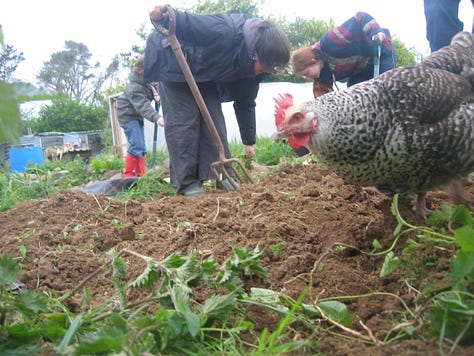

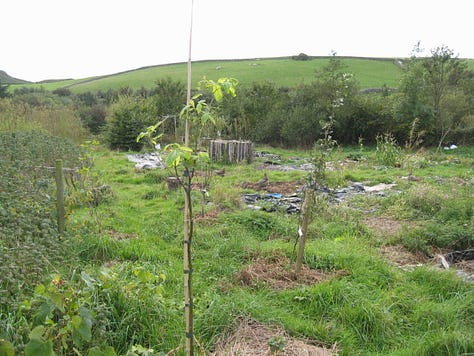

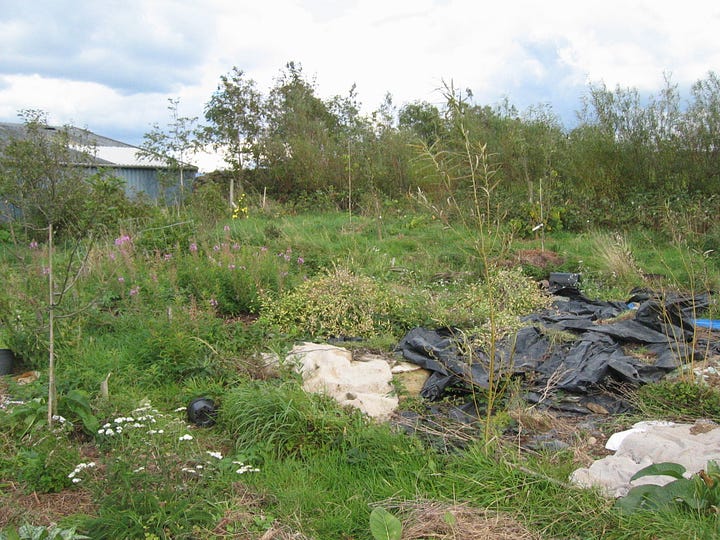
Taiming the forest gardens at Chickenshack co-op in 2006/ 7
Sector39 2008-14
Up until 2008 my evolving plan was to steer Chickenshack in the direction of creating a seamless venue for holding permaculture courses. We had similar ideas in mind at the outset, but it had taken 10 years and more to get to the stage where we had the experience and momentum to be able to do that. What I had overlooked, was the fact that although I had always felt like a man with a mission, to save the world or whatever, for the others living there, 10 years on from the initial excitement of setting it up, they would rather not have the intrusion. I did have to accept that it was primarily a home, and perhaps not quite big enough to accommodate my ambitions and financial needs to generate income from it.
The 2008 PDC at Chickenshack turned out to be the last one and many of the attendees had made the journey over from Llanfyllin, in the Welsh borders and were connected to the Workhouse project, this proved to be a watershed. We focussed our design work and field trip to visit the crumbling stone building, derelict and empty for 25 years but subject to community interest and a coalition of partners was forming around it to try and save it and bring it into community ownership. The Workhouse has proven to be a challenge to bring it back into use, to finance keeping it going and balance off the interests of the various user groups that saw opportunity there.
A venue for gigs, a study centre, a gallery, business start-ups, cafe, history centre, permaculture, community food and environment hub, dog training and grooming, children’s forest school activities, the list goes on. It has become a hub for creativity over the years, but it is also a challenging place, cold, austere, designed to create division and hierarchy among the occupants. It sits on the flood plain of Afon Cain, and two packed out music festival held there in 2008 and 2009 ended up flooded when a July rain burst hit the area and sent the whole site under water.
Changing lives, Going green
In 2009 we made a 6-part series on the theme of greener lifestyles with BBC Wales. It came about rather accidentally, and the production company had some very odd ideas and preconceptions, we pushed quite hard to make the series a bit better informed and I was proud of the outcomes. In the background it captures the Workhouse at that time, it was a reality TV format, and they had a family form North Wales camped in yurts in the field experiencing low impact and simpler living.
It is interesting to reflect also as this was before the 2010 COP summit in Copenhagen, which was to be the big one where carbon reduction targets and strategies were to be locked in, and consequently there was much more media interest in these topics then than there is now. Of course, the 2010 COP was a disaster and was undermined by the USA and the oil lobby, who really launched their campaign of disinformation around that time. This was another moment when the world could have changed direction but did not. The failure of Copenhagen 2010 was a significant watershed and a rapid moving away of politics and money from the science and data. TV producers also stopped making programs like Changing Lives, Going Green.
The world was still on course for Paris in 2015, but by the time the pathway to net zero had been set out, the treaty had been gutted of any teeth, binding targets or anything else of substance. Detailed decades of scientific studies and carefully worded documents dissolved into a meaningless word salad of vague promises and policy positions.
The road to Cultivate and beyond
The May 2010 PDC, held at Llanfyllin Workhouse turned out to be a significant catalyst for the next 5 years of my life and led to the founding of Cultivate Newtown, an organic community food growing hub, and host to a series of related project conceived and launched from within its structure. I will go into the details perhaps at another opportunity, this is the series of stepping stones that has led me to this place where I find myself today.
We used the 2010 PDC group to generate ideas for a practical design for Cwm Harry to turn its unused back lot into a community garden. They liked the ideas so much they offered me a job. Progress at the Workhouse had been painfully slow, as the building itself was so demanding, and absorbed available resources, shifting my focus to Newtown also meant I could finally fully focus on an out and out permaculture project, with the additional support of a bigger organisation
I spent nearly 5 years working with Cwm Harry, a waste management company that recycled food waste into compost, developing a series of community gardens that would utilise the output from their factory. The initial garden we designed gave us the insight to put together a full funding application to take these ideas further and suddenly we were immersed in this new reality.
In 2014 the funding for the establishment phase of the Cultivate project was coming to end, we had won three years of funding via the National Lottery creating the Get-Growing project, which had created three community growing hubs:
One in a derelict yard in Llanidloes, now known as the Hanging Gardens
The Cultivate site, Pen Dinas, Old Llanidloes road, Newtown
And Cae Bodfach heritage orchard in Llanfyllin.
Next Stop, Uganda
In 2014 I was invited on a study tour of Uganda through a local charity, Dolen Ffermio and this led in a roundabout way for the formal creation of Sector39, registered as a company limited by shares and the beginning of becoming self-employed. I did not live close enough to Newtown to warrant a deeper and ongoing involvement in Cultivate and realised my challenge was to begin to apply more of what I had learned from these experiences to my own enterprise and community here in North Powys.
My mix of projects, activities and funding plans all came crashing down in the post covid period, I found that I had lost much of my momentum and had become reliant on government bailouts which I suddenly found myself unable to pay back. I have spent the last year or so going through a process of reinvention, and renewal. I had set up Sector39 as a limited company, as I was about to take a series of risks. Working in Africa, in unfamiliar areas and away from the umbilical cord of being part of a larger organisation, as i had always been in the past, it worked well for a while, allowed me to take those risks, get out to Africa and set some new things in motion here in the UK as well. We raised money from the Welsh government for the One School One Planet project as well as some support for the Uganda work, and extension funding from Arkleton Trust 2020-2 to follow through on our permaculture education work to form a mutual support network we called the Academy of Permaculture. This took me to Kenya, Rwanda and back to Uganda and allowed me to work again with the most active trainees from the phase one of the project.
By 2023 I had realised I wasn’t going to be able to sustain all of this and went through something of a collapse, I had pushed myself, my ambitions and everything else just a bit too far. As I regroup, and reconsider my priorities I also realise I have a huge experience base and network to draw on, a new community growing hub at Treflach farm, a new housing Co-operative at Dragons, and the need for permaculture design input has never been more urgent. Time to pull my plans together for what comes next.





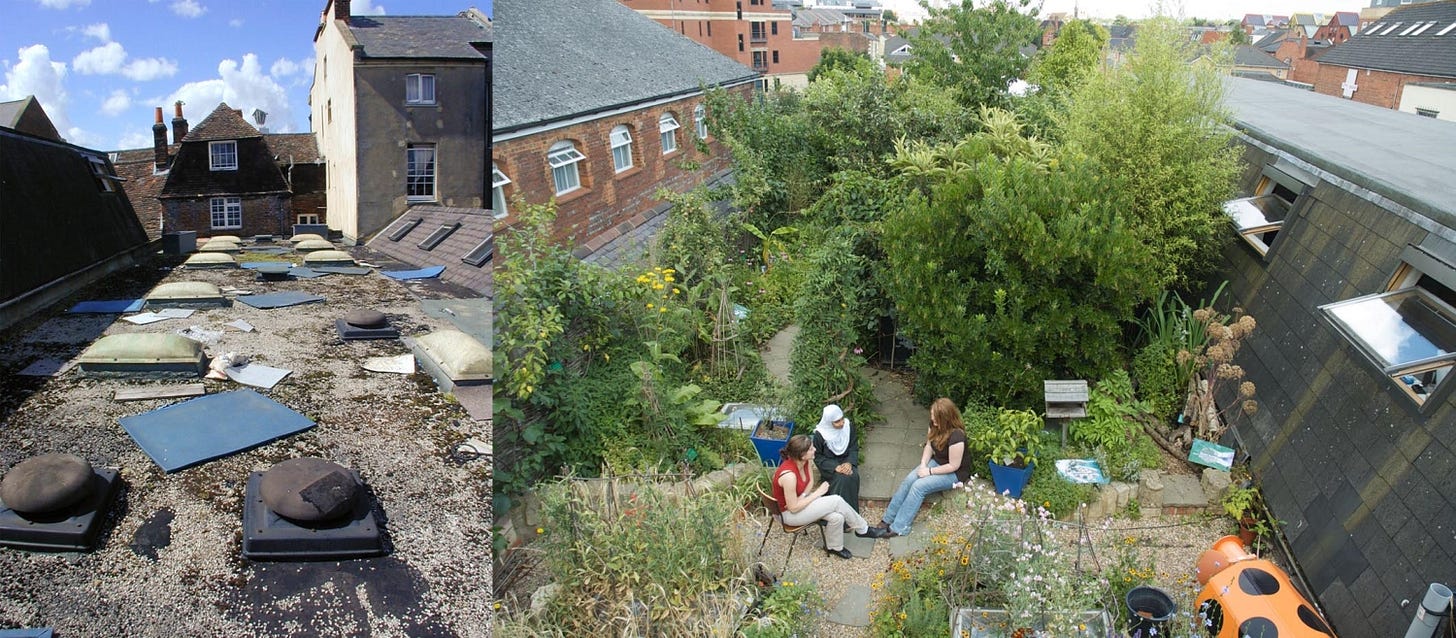

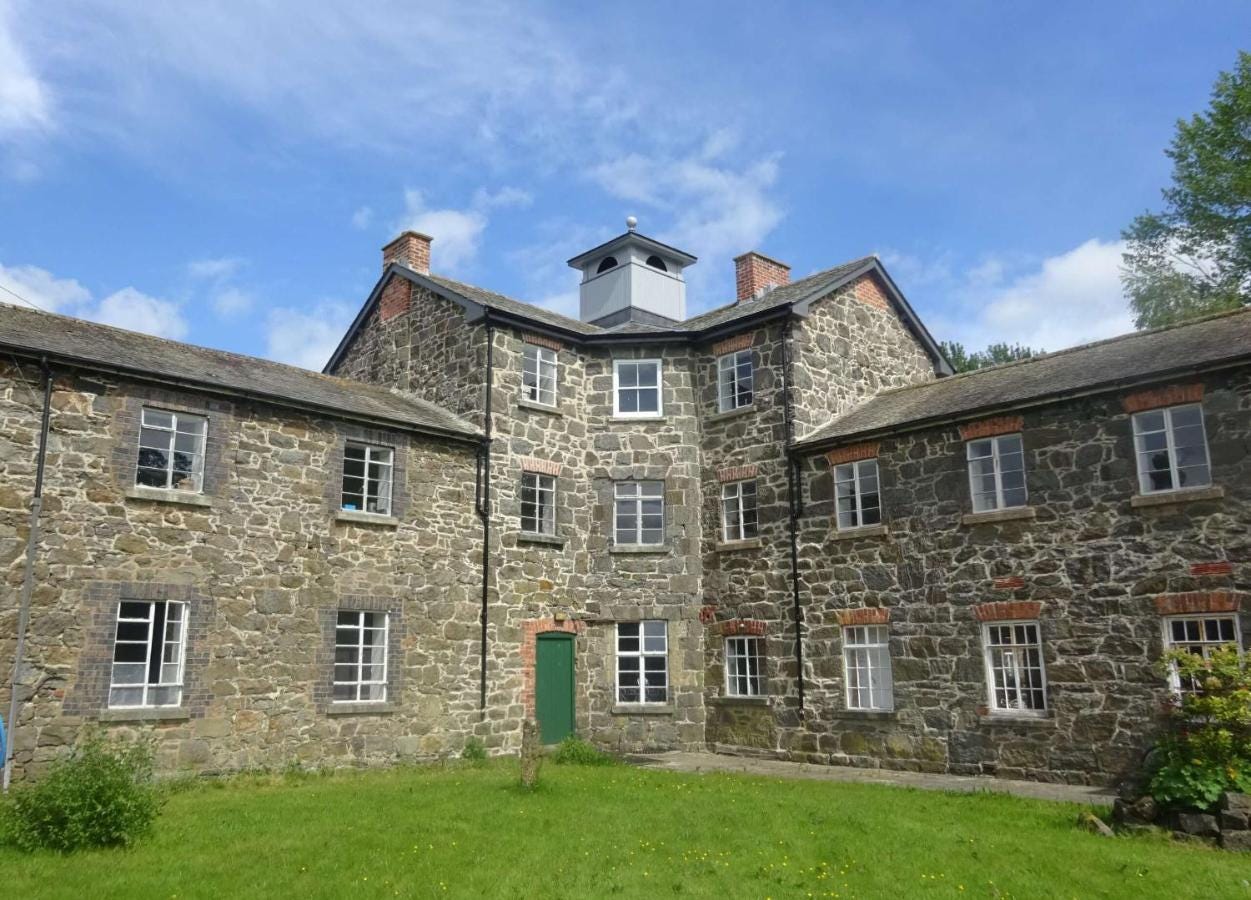
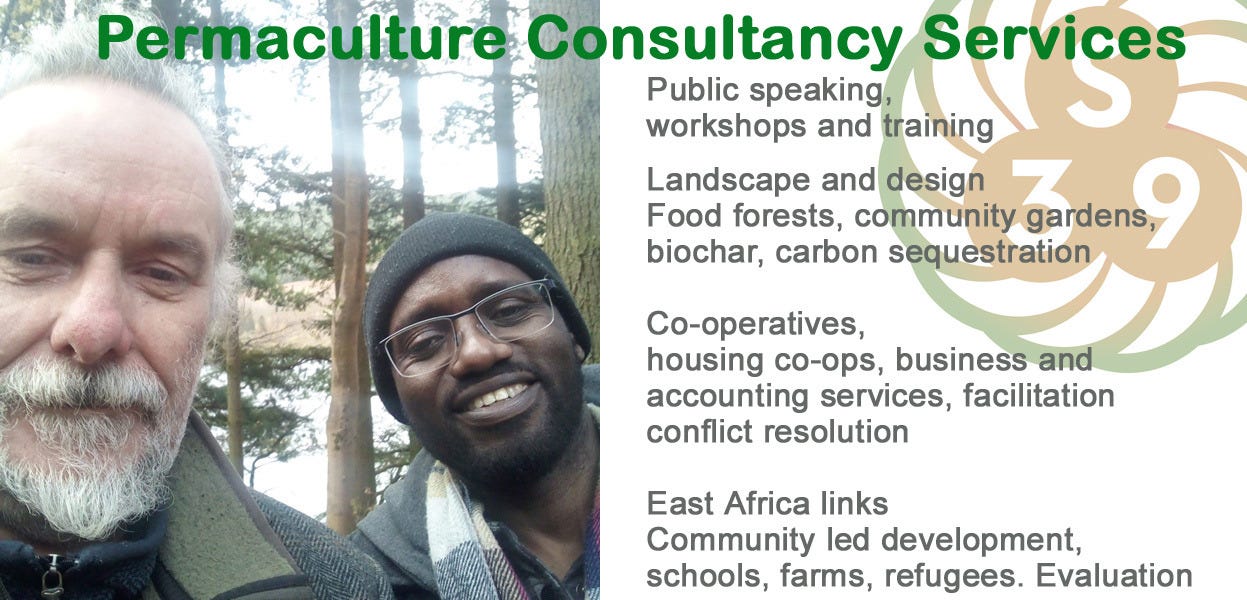
Lovely story